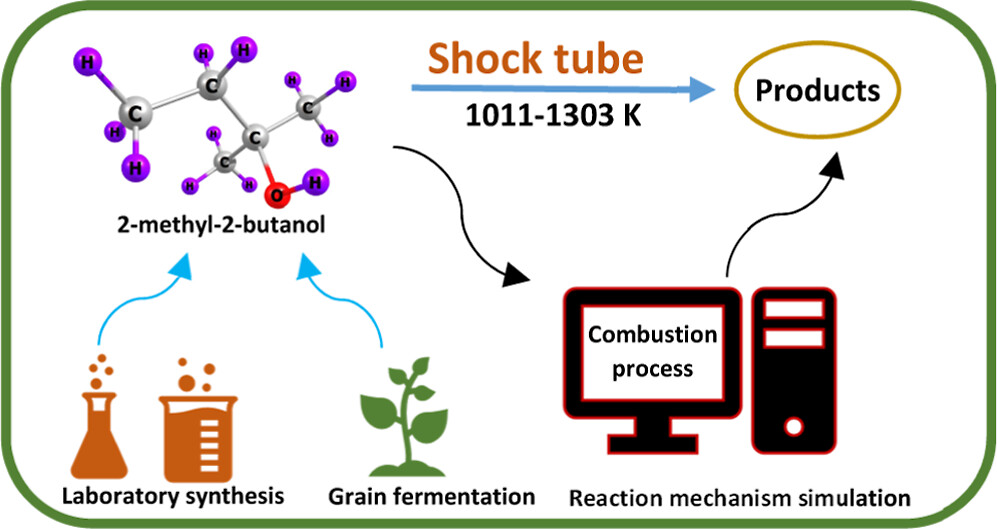Pyrolysis of a branched alcohol, 2-methyl-2-butanol (2M2BOH), was carried out behind the reflected shock wave in the temperature range of 1011–1303 K and under pressures varying from 9.3 to 14.6 atm. Qualitative and quantitative analysis of the postshock mixture was performed using gas chromatography-mass spectrometry and gas chromatography with a flame ionization detector, respectively. The rate coefficients for the C–C and C–O bond cleavage reaction pathways were calculated using the variational transition-state theory. The Rice–Ramsperger–Kessel–Marcus/Master equation was employed to calculate the rate coefficients for the H2O-elimination reactions, unimolecular dissociation, and isomerization reaction pathways. The overall decomposition rate coefficient for the 2-methyl 2-butanol (2M2BOH) was estimated to be 𝑘expttotal(1011−1303K)=(3.29±0.73)×1011×exp[−(47.41±0.53𝑇)]s−1 , where activation energy is given in kcal mol–1. The reaction path analysis was performed, which gives information regarding the contribution of individual intermediate species toward the decomposition of 2M2BOH. A set of reactions was proposed and used to simulate the combustion chemistry of 2M2BOH, which consists of 48 reactions and 39 species. The experimentally measured and simulated mole fractions for the reactant and products showed reasonably good agreement. This work additionally investigates the effect of branching on the decomposition kinetics of long-chain alcohols.
-
Call
-
E-mail
Journal Details
1. High-Temperature Pyrolysis Study of 2-Methyl-2-butanol behind Reflected Shock Wave: Shock Tube and Computational Study.
S. Nayak and B. Rajakumar J. Phys. Chem. A, , 5691–5706, 128

